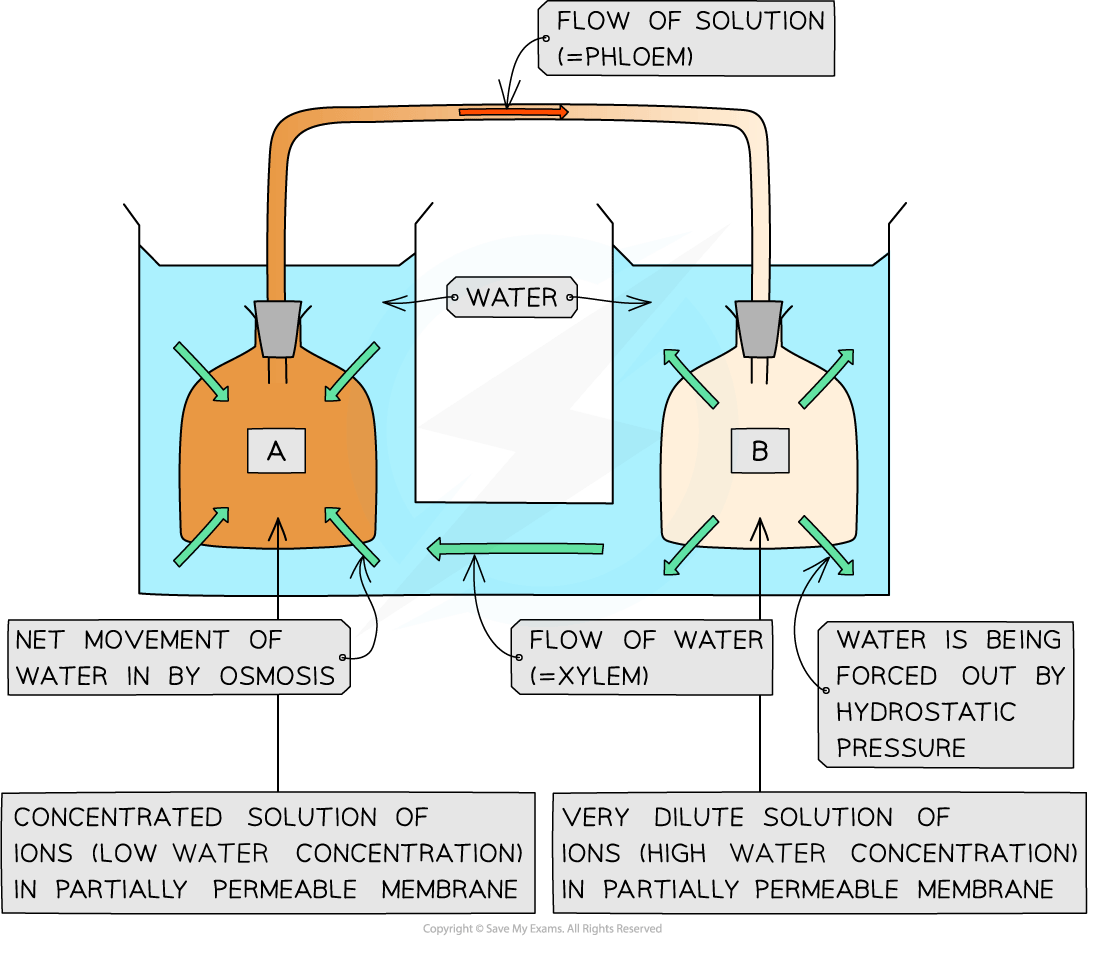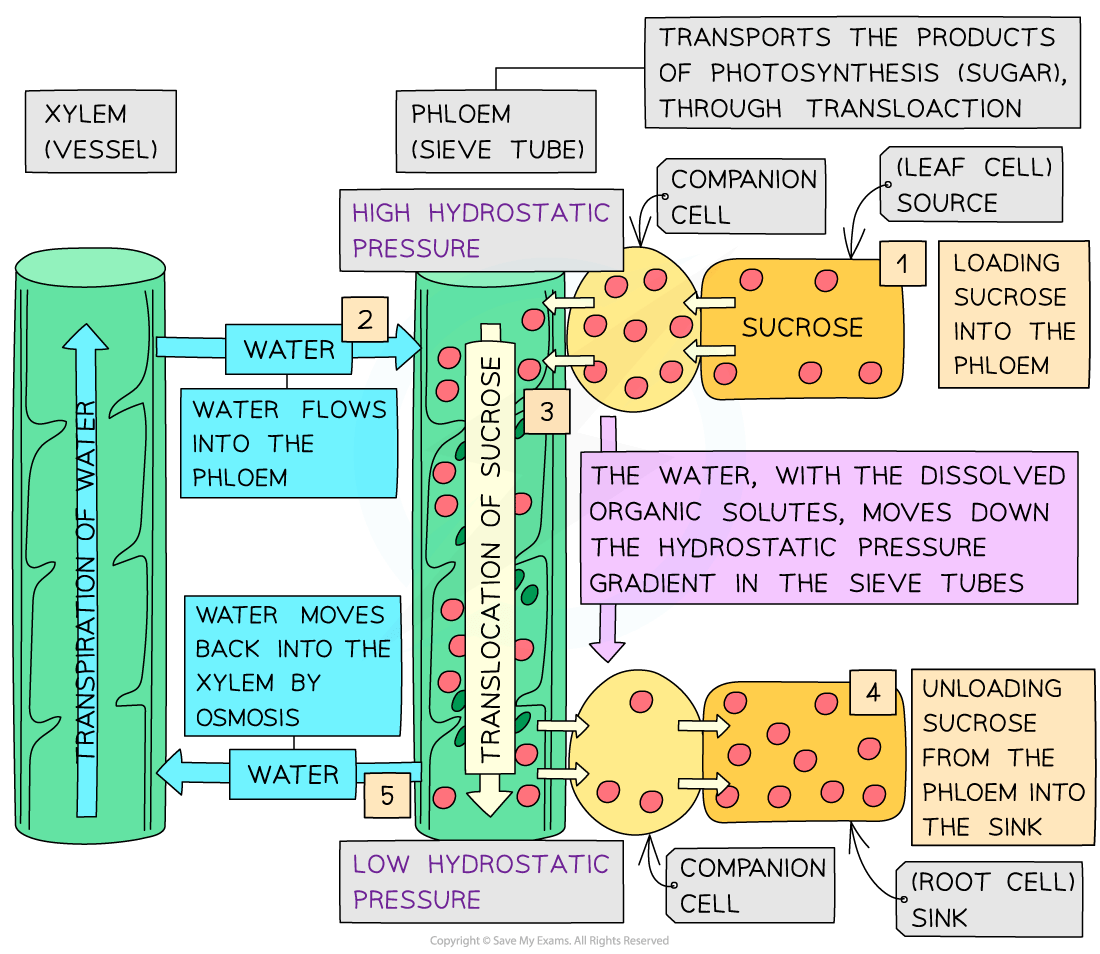Phloem: Mass Flow (Cambridge (CIE) A Level Biology): Revision Note
Exam code: 9700
Phloem: mass flow
The mass flow hypothesis was the model initially used to explain the movement of assimilates in the phloem tissue
The simple model consisted of:
Two partially permeable membranes containing solutions with different concentrations of ions (one dilute the other concentrated)
These two membranes were placed into two chambers containing water and were connected via a passageway
The two membranes were joined via a tube
As the membranes were surrounded by water, the water moved by osmosis across the membrane containing the more concentrated solution
This forced the solution towards the membrane containing the more dilute solution (where water was being forced out of due to hydrostatic pressure)
Scientists now support a modified version of this hypothesis – the pressure flow gradient

Pressure (hydrostatic) flow gradient
Phloem sap (containing sucrose and other organic solutes) moves by mass flow up and down the plant
The advantage of mass flow is that it moves the organic solutes faster than diffusion
In xylem tissue the pressure difference that causes mass flow occurs because of a water potential gradient between the soil and leaf (this requires no energy input by the plant)
However in phloem tissue energy is required to create pressure differences for the mass flow of the organic solutes
The pressure difference is generated by actively loading sucrose into the sieve elements at the source (usually a photosynthesising leaf or storage organ) which lowers the water potential in the sap
This results in water moving into the sieve elements as it travels down the water potential gradient by osmosis
The presence of water within the sieve elements increases the hydrostatic or turgor pressure at the source and as solutes (e.g. sucrose) are removed / unloaded from the sieve elements causing water to follow by osmosis at the sink (creating a low hydrostatic pressure), a hydrostatic pressure gradient occurs
The pressure difference between the source and the sink results in the mass flow of water (containing the dissolved organic solutes) from the high hydrostatic pressure area to the low hydrostatic pressure area
The mass flow of organic solutes within the phloem tissue occurs above and below the sources (which is typically photosynthesising leaves). Therefore sap flows upwards and downwards within a plant

Examiner Tips and Tricks
Remember that the source is not necessarily the leaves and the sink is not necessarily the roots.
Phloem sap moves up and down the plant (although it will only move in one direction per sieve tube).
The hydrostatic pressure gradient is dependent on water moving in and out of the xylem vessels by osmosis.

Unlock more, it's free!
Did this page help you?